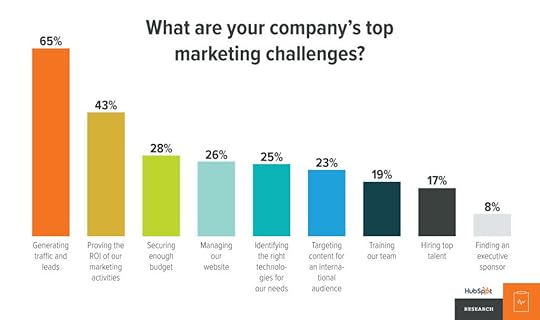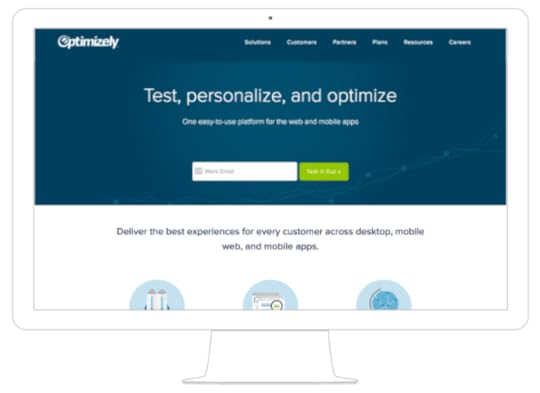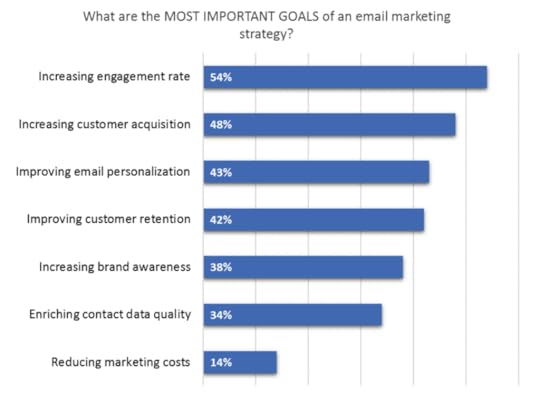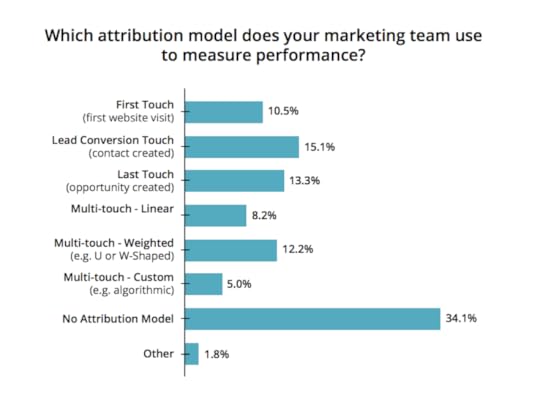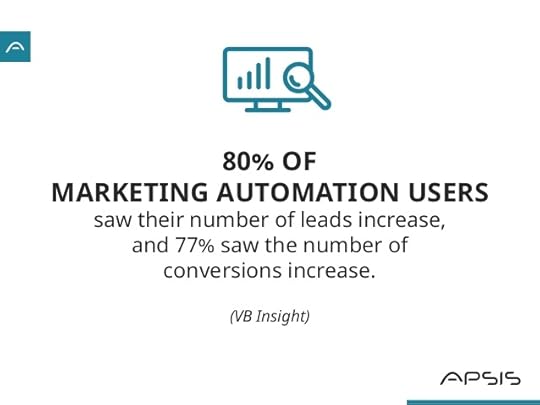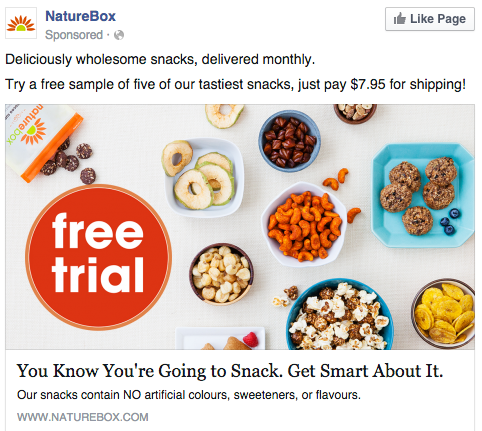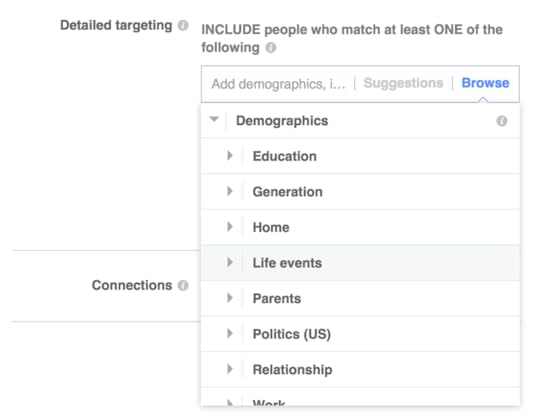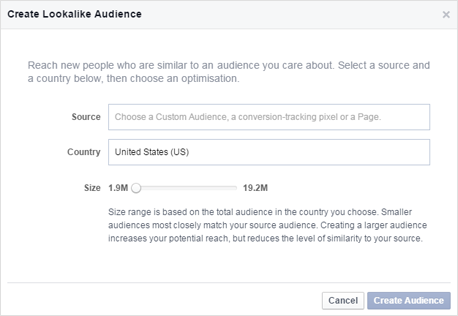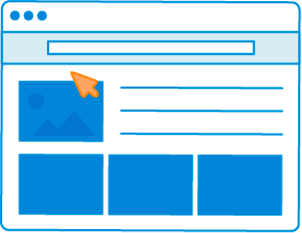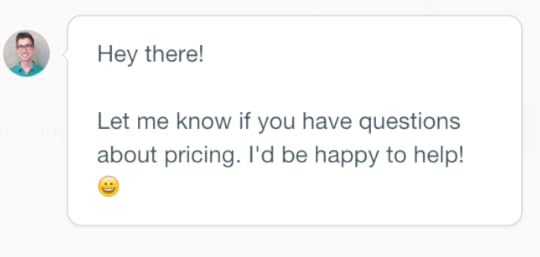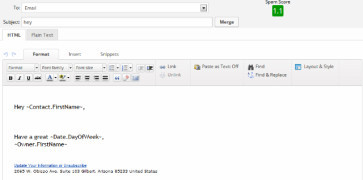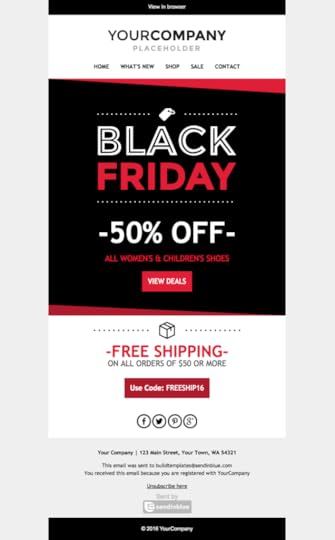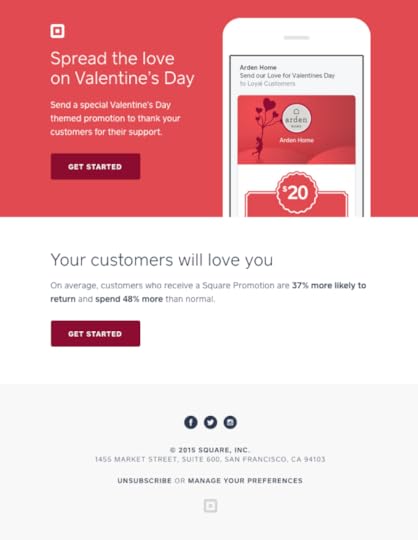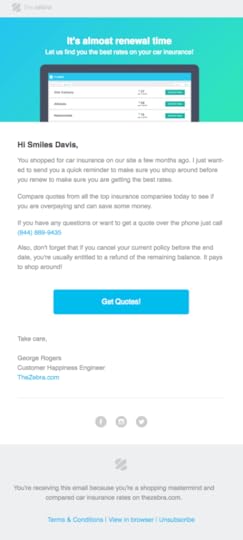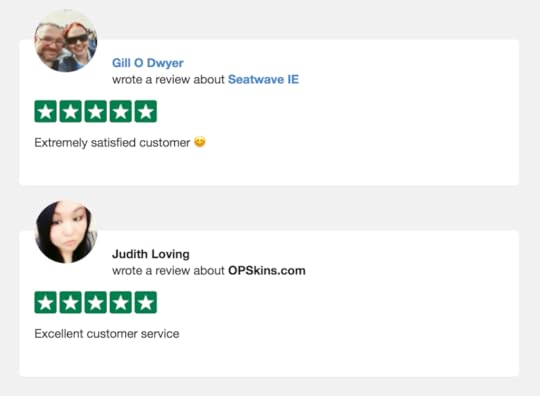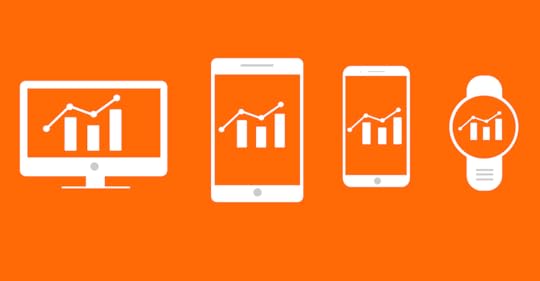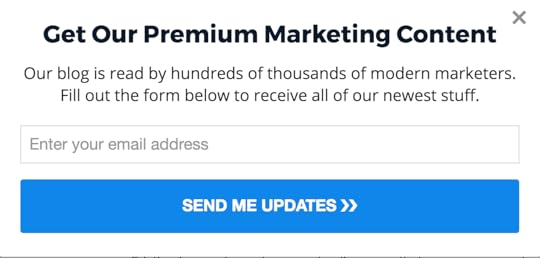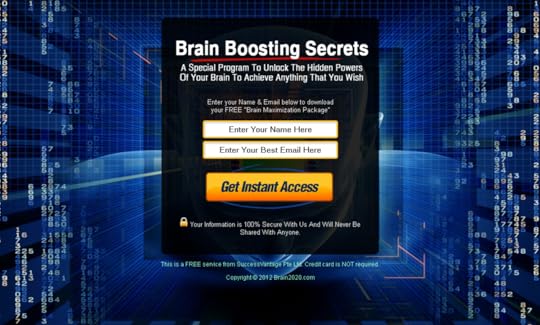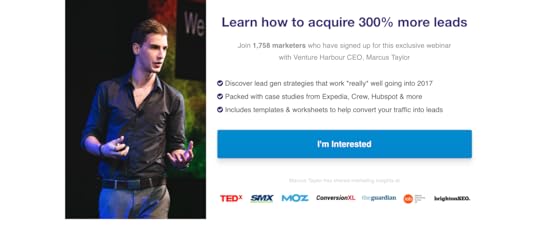Marcu Taylor's Blog, page 22
May 15, 2017
9 Must-Have Conversion Rate Optimisation Software Tools
Today I’m going to run through the must-have conversion rate optimisation tools for any online brand, but this won’t be like most articles you see on this topic. Instead of focusing on the tools themselves, I’m going to flip things around and list the essential CRO tasks you need to complete with a number of tool recommendations along the way.
The reason I’m doing it this way is because most optimisation tools do various tasks, but none of them do it all. So it’s better to know what you need from your toolset before you sign up to anything. This way you can choose the right combination of tools and make sure there are no gaps or unnecessary overlaps in your CRO tech stack.
Task #1: Analytics
The first tool any website needs for conversion optimisation is a solid analytics platform, but I always suggest using at least two. Aside from being one of the best tools in the business, Google Analytics is free, which makes it a no-brainer. But why am I saying you should have more than one analytics tool?
Well, You only have to look at the problems Facebook had in 2016 with data accuracy to see no analytics platform is 100% reliable. So it always pays to have at least two sets of data coming in for your most important metrics. You’ll also find certain discrepancies in the data tools provide, which means the more datasets you have, the more robust your insights are.
The good news is just about every CRO tool provide some kind of analytics, making it easy to compare datasets. There’s even a free Google Analytics competitor in the name of Piwik, an open-source tool that comes with most of Google Analytics’ features. You also have the likes of Kissmetrics and Adobe Analytics that come with a richer set of features although you have to pay for the privilege with these ones.
Task #2: Landing page optimisation
Normally, your most qualified traffic starts their journey on a landing page (or product/service page). Needless to say, these are pretty damn important and they should be a key area of focus for your conversion optimisation strategy.
Tools like Unbounce and Instapage are great for creating and managing your landing pages from one place and they also offer analytics and testing features. You’ll still want to set up events tracking in Google Analytics (and your other analytics tools) for more accurate conversion data, but tools like Unbounce make it incredibly easy to manage and edit pages without writing any code.
Task #3: Form optimisation
Unfortunately, forms are a real conversion killer but there are plenty of optimisation tools you can use to reveal where users are running into problems with your web forms. The reason I like Leadformly is it comes with pre-optimised web forms you can embed on any page and customise without writing any code. Of all the form tools I’ve used, this is by far the quickest way to make a positive impact on your form conversion rates.
Task #4: A/B testing tool
VWO is one of the best A/B testing tools in the game
There are so many A/B testing tools on the market these days, it’s hard to keep up with them all. On the one hand, it’s great that testing has become so accessible, but there’s been a lot of misinformation to come with it.
First of all, I don’t buy into the notion that small-to-medium size businesses should be testing every CTA button; your time can be better spent elsewhere. The most important thing with any A/B test is to be sure you have a large enough sample audience to make your data reliable. When you test small details or multiple variations you’re instantly reducing the size of your sample audience and the quality of your data decreases.
Unless you’re a major eCommerce brand (or attracting similar volumes of traffic) I would stick to testing full pages or major sections – eg: landing pages, hero sections, etc. Optimizely and VWO are probably the two biggest names in testing tools while Unbounce and Instapage also come with A/B testing features for landing pages.
Task #5: Personalisation
Optimizely makes it easy to personalise your content for multiple audiences
Personalisation is the new big trend in conversion optimisation, allowing you to show different messages to users based on their previous actions. For example, first-time visitors can see a completely different homepage to returning visitors and different again to previous visitors who abandoned their shopping cart.
Tools like Optimizely, VWO, Adobe Target and various others make personalisation pretty easy – all great options if you’re looking to get involved.
Just remember that splitting your visitors into different segments cuts your sample audience into smaller chunks – so make sure you have enough traffic for each segment to generate a large enough sample size for testing.
Task #6: Sales automation
It’s no good generating leads if you don’t have the resources to handle them and platforms like Infusionsoft automate a huge chunk of the process for you. One of its best features from a conversion point of view is automating lead follow-ups with personalised messages for a range of different actions: email sends, form submissions, payment history and more.
As the number of interactions between consumers and brands increases it can be tricky to keep track of where users are long the buying process. With sales automation, you know where everyone is and you have an automated system to send them personalised messages encouraging them to take the next step.
Task #7: User behaviour
Clicktale is an incredible enterprise analytics and CRO tool
One of the best ways to measure website performance is to see what users get up to while they’re on it. If people aren’t seeing your call-to-action, you know it needs to go somewhere else. If they keep clicking on static elements, you know it’s time to revise the design of your links, buttons and other UI elements.
This is where heatmapping remains one of the most valuable conversion rate optimisation tools in your tech stack. CrazyEgg is still the big name in heatmapping and I’ve mentioned Hotjar before – both of which are great tools for heatmapping specifically. However, if you want a full analytics and conversion optimisation tool rolled into one, Clicktale gets my recommendation.
Task #8: Speed optimisation
GTmetrix is a free page speed tool that gives detailed feedback and recommendations
The best tool you can have on your side for speed optimisation is a quality developer who knows how to put code together with performance in mind. However, if your site is already live and lagging behind, you need to diagnose what the problem is.
Luckily, there are plenty of free tools to help with this. GTmetix, Pingdom and Google’s Page Speed tools are just a few of your free options.
To get the fastest results you’ll also want to look into content delivery networks (CDNs) to speed up your site and caching tools for return visitors. You should also minify your CSS, JavaScript and other resources and don’t forget to optimise your images and other files for faster loading times.
Task #9: Competitor analysis
Every tool we’ve looked at so far helps you analyse your own site but there’s a lot to be said for learning from your competitors. Competitor analysis tools have been around for ages but Similar Web is the standout option for me right now.
First of all, its pool of data is huge and global (many are US-centric). With this tool you can pinpoint your closest search competitors, based on keyword performance, and it also tells you when new competitors emerge. You get detailed insights into their performance, including number of visits, page views, bounce rate and visit duration – plus audience interests, geolocation details and a whole lot more.
Be efficient with conversion optimisation
It’s easy to get lost in a sea of data and irrelevant tests with conversion rate optimisation, which only ends up wasting time and money for nothing – or worse, causing more harm than good. Conversion rate optimisation only works when it’s efficient and this means choosing the right tools and areas of your site to focus on. Always aim for key areas of your website rather than small details because this is where the real impact will be made and automate as much of the process as you can with your CRO tech stack.
The post 9 Must-Have Conversion Rate Optimisation Software Tools appeared first on Venture Harbour.
10 Must-Have Conversion Rate Optimisation Software Tools
Today I’m going to run through the must-have conversion rate optimisation tools for any online brand, but this won’t be like most articles you see on this topic. Instead of focusing on the tools themselves, I’m going to flip things around and list the essential CRO tasks you need to complete with a number of tool recommendations along the way.
The reason I’m doing it this way is because most optimisation tools do various tasks, but none of them do it all. So it’s better to know what you need from your toolset before you sign up to anything. This way you can choose the right combination of tools and make sure there are no gaps or unnecessary overlaps in your CRO tech stack.
Task #1: Analytics
The first tool any website needs for conversion optimisation is a solid analytics platform, but I always suggest using at least two. Aside from being one of the best tools in the business, Google Analytics is free, which makes it a no-brainer. But why am I saying you should have more than one analytics tool?
Well, You only have to look at the problems Facebook had in 2016 with data accuracy to see no analytics platform is 100% reliable. So it always pays to have at least two sets of data coming in for your most important metrics. You’ll also find certain discrepancies in the data tools provide, which means the more datasets you have, the more robust your insights are.
The good news is just about every CRO tool provide some kind of analytics, making it easy to compare datasets. There’s even a free Google Analytics competitor in the name of Piwik, an open-source tool that comes with most of Google Analytics’ features. You also have the likes of Kissmetrics and Adobe Analytics that come with a richer set of features although you have to pay for the privilege with these ones.
Task #2: Landing page optimisation
Normally, your most qualified traffic starts their journey on a landing page (or product/service page). Needless to say, these are pretty damn important and they should be a key area of focus for your conversion optimisation strategy.
Tools like Unbounce and Instapage are great for creating and managing your landing pages from one place and they also offer analytics and testing features. You’ll still want to set up events tracking in Google Analytics (and your other analytics tools) for more accurate conversion data, but tools like Unbounce make it incredibly easy to manage and edit pages without writing any code.
Task #3: Form optimisation
Unfortunately, forms are a real conversion killer but there are plenty of optimisation tools you can use to reveal where users are running into problems with your web forms. The reason I like Leadformly is it comes with pre-optimised web forms you can embed on any page and customise without writing any code. Of all the form tools I’ve used, this is by far the quickest way to make a positive impact on your form conversion rates.
Task #4: A/B testing tool
VWO is one of the best A/B testing tools in the game
There are so many A/B testing tools on the market these days, it’s hard to keep up with them all. On the one hand, it’s great that testing has become so accessible, but there’s been a lot of misinformation to come with it.
First of all, I don’t buy into the notion that small-to-medium size businesses should be testing every CTA button; your time can be better spent elsewhere. The most important thing with any A/B test is to be sure you have a large enough sample audience to make your data reliable. When you test small details or multiple variations you’re instantly reducing the size of your sample audience and the quality of your data decreases.
Unless you’re a major eCommerce brand (or attracting similar volumes of traffic) I would stick to testing full pages or major sections – eg: landing pages, hero sections, etc. Optimizely and VWO are probably the two biggest names in testing tools while Unbounce and Instapage also come with A/B testing features for landing pages.
Task #5: Personalisation
Optimizely makes it easy to personalise your content for multiple audiences
Personalisation is the new big trend in conversion optimisation, allowing you to show different messages to users based on their previous actions. For example, first-time visitors can see a completely different homepage to returning visitors and different again to previous visitors who abandoned their shopping cart.
Tools like Optimizely, VWO, Adobe Target and various others make personalisation pretty easy – all great options if you’re looking to get involved.
Just remember that splitting your visitors into different segments cuts your sample audience into smaller chunks – so make sure you have enough traffic for each segment to generate a large enough sample size for testing.
Task #6: Sales automation
It’s no good generating leads if you don’t have the resources to handle them and platforms like Infusionsoft automate a huge chunk of the process for you. One of its best features from a conversion point of view is automating lead follow-ups with personalised messages for a range of different actions: email sends, form submissions, payment history and more.
As the number of interactions between consumers and brands increases it can be tricky to keep track of where users are long the buying process. With sales automation, you know where everyone is and you have an automated system to send them personalised messages encouraging them to take the next step.
Task #7: User behaviour
Clicktale is an incredible enterprise analytics and CRO tool
One of the best ways to measure website performance is to see what users get up to while they’re on it. If people aren’t seeing your call-to-action, you know it needs to go somewhere else. If they keep clicking on static elements, you know it’s time to revise the design of your links, buttons and other UI elements.
This is where heatmapping remains one of the most valuable conversion rate optimisation tools in your tech stack. CrazyEgg is still the big name in heatmapping and I’ve mentioned Hotjar before – both of which are great tools for heatmapping specifically. However, if you want a full analytics and conversion optimisation tool rolled into one, Clicktale gets my recommendation.
Task #8: Speed optimisation
GTmetrix is a free page speed tool that gives detailed feedback and recommendations
The best tool you can have on your side for speed optimisation is a quality developer who knows how to put code together with performance in mind. However, if your site is already live and lagging behind, you need to diagnose what the problem is.
Luckily, there are plenty of free tools to help with this. GTmetix, Pingdom and Google’s Page Speed tools are just a few of your free options.
To get the fastest results you’ll also want to look into content delivery networks (CDNs) to speed up your site and caching tools for return visitors. You should also minify your CSS, JavaScript and other resources and don’t forget to optimise your images and other files for faster loading times.
Task #9: Competitor analysis
Every tool we’ve looked at so far helps you analyse your own site but there’s a lot to be said for learning from your competitors. Competitor analysis tools have been around for ages but Similar Web is the standout option for me right now.
First of all, its pool of data is huge and global (many are US-centric). With this tool you can pinpoint your closest search competitors, based on keyword performance, and it also tells you when new competitors emerge. You get detailed insights into their performance, including number of visits, page views, bounce rate and visit duration – plus audience interests, geolocation details and a whole lot more.
Be efficient with conversion optimisation
It’s easy to get lost in a sea of data and irrelevant tests with conversion rate optimisation, which only ends up wasting time and money for nothing – or worse, causing more harm than good. Conversion rate optimisation only works when it’s efficient and this means choosing the right tools and areas of your site to focus on. Always aim for key areas of your website rather than small details because this is where the real impact will be made and automate as much of the process as you can with your CRO tech stack.
The post 10 Must-Have Conversion Rate Optimisation Software Tools appeared first on Venture Harbour.
May 9, 2017
20 Insightful Lead Nurturing Statistics & Charts
As the consumer journey becomes more complex, the way brands generate and nurture leads is also changing. Instead of casting the widest net they can and hoping for the best, marketers focus more on generating high-quality leads and guiding them along the path to purchase.
Doing this at scale presents a number of challenges, though. Thankfully, the tools and data sets we have available are also getting more sophisticated with every year that passes. As you’ll see from these 20 insightful lead nurturing statistics and charts, there’s a stronger emphasis on lead nurturing and automating as much of the process as possible.
Lead generation statistics and charts
You can’t nurture what you don’t have and this means the first stage of your marketing efforts is still lead generation. The questions is: what kind of leads are brands trying to generate and how do they get them?
#1: 65% of businesses say generating traffic and leads is their biggest marketing challenge. (Hubspot)
One thing that hasn’t changed over the years is that businesses still feel that generating traffic and leads is their biggest challenge. However, the nature of this challenge has changed. There are more touchpoints between consumers and brands than ever, across a growing number of platforms and devices – each one providing an opportunity to narrow down on the kind of leads you generate.
#2: 93% of B2B companies say content marketing generates more leads than traditional marketing strategies. (Marketo, Forbes)
Content marketing has gone from industry buzzword to a staple part of brands’ marketing strategies. This stat is particularly interesting coming from B2B companies who are used to generating leads from events, which is still a great strategy, even if you consider it traditional. Of course, content marketing being more effective for your business depends on the kind of content you’re able to produce on a regular basis.
#3: 93% of B2B buying processes start with an online search. (Pinpoint Market Research and Anderson Jones PR)
This reinforces the importance of successful content marketing but don’t overlook the role of paid advertising in your search marketing efforts – especially when Google continues to put more emphasis on its ads over organic listings.
#4: 96% of visitors who come to your website aren’t ready to buy (yet). (Marketo)
If there’s a stat that highlights the importance of lead nurturing, it’s this one. Getting visitors to your site is only the beginning and you’re missing out on a wealth of business, if you don’t have a solid strategy in place to nurture leads along the consumer journey.
#5: 68% of B2B companies will use landing pages to nurture new sales leads for future conversion. ( Marketing Sherpa )
Many marketers are calling this the end of homepages, where visitors need to be greeted with more specific messages than a generic homepage can offer. Landing pages are the obvious answer to this problem – and they should feature heavily in your PPC strategy – but we’re also entering the age of dynamic, personalised content with tools like Optimizely and Google Content Experiments.
#6: B2C companies that blog 11+ times per month get more than 4X as many leads than those only blogging 4-5 times per month. (Hubspot)
While this stat says a lot, there are a couple of things to consider. First, make sure your priority is always quality over quantity when it comes to blog content and, second, understand that search engines favour unique, detailed content over repetitive/short pieces. You’re still going to generate more leads with 4-5 pieces of great content than producing 11 pieces of crap per month.
Lead nurturing statistics and charts
With a steady stream of high-quality leads discovering your brand, lead nurturing takes the front seat and brands are getting this message loud and clear.
#7: 74% of companies say converting leads into customers is their top priority (Hubspot)
The truth is every lead that doesn’t convert, at some point in the future, is gobbling up your marketing spend and this makes lead nurturing a priority for the vast majority of companies.
#8: 48% of businesses say most of their leads require “long cycle” nurturing with many influencers. (Ascend2)
This illustrates how much work you may have to put into nurturing your leads. Those who come with little buying intent at the first interaction require more convincing, but it’s better to put the effort in than let them slip away and make the purchase with one of your rivals.
#9: 54% of email marketers say increasing engagement rate is their number one priority (Ascend2)
With email marketing playing such a fundamental role in lead nurturing, it’s interesting to see most marketers say that increasing engagement is their top priority. Getting people on your email list is one thing; keeping them on there and actually interacting with your email content is something else.
#10: Targeting users with content relevant to their position along the buying process yields 72% higher conversion rates. (Aberdeen)
This brings us on to the most important thing with lead nurturing: relevance. Knowing where your prospects are along the buying process and delivering content that meets their current needs (whether it’s ads, web pages, emails or whatever) is by far the most effective way to get them one step closer to buying.
#11: 51% of email marketers say email list segmentation is the most effective way to personalise lead nurturing. (Ascend2)
Going back to email marketing – which is one of the easiest ways to automate personalised content – marketers say segmented lists are your best bet for personalising lead nurturing. They’re not wrong.
#12: 34.1% of businesses don’t use any attribution model to measure marketing performance (Bizible)
Despite all of this talk so far about lead nurturing and personalisation, 34.1% of marketing teams use no attribution model to measure their performance. This is crazy. If you can’t attribute user actions to their place along your sales funnel, you’re not in a position to nurture anything.
#13: Only 29% of brands nurture their existing customers beyond the initial purchase. (Demand Gen)
While 81% of brands have early-stage lead nurturing tactics in place only 29% are targeting their existing customers beyond the first purchase. I’m not sure if this is more or less ludicrous than the previous stat. Not only are your existing customers more likely to buy again than new leads, you’ve put in a lot of time, effort and money to get them this far – so maximise your return from every customer.
Lead automation statistics and charts
Okay, so lead nurturing is important – we’ve established that. But nothing in the world of marketing happens by magic and nurturing leads on a large scale requires the right kind of tools. Enter automation software.
#14: 57% of marketers say lead nurturing is the most valuable feature of automation software (Ascend2)
This tells you why brands are investing more in automation software every year. The only way to maximise your marketing ROI is to convert every possible lead you can. But doing this at scale requires automated data collection and attribution. You’re not going to do this manually for thousands of leads per month and, even if you try, you’re wasting time that could be better spent elsewhere.
#15: 79% of top-performing companies have been using marketing automation for three or more years. (Pardot)
Automation is a bit of a buzzword at the moment but the top-performing companies have been doing this for a while now. It’s essentially a numbers game. Machines can crunch numbers and attribute any amount of leads in an instant – not only allowing you to maximise the number of leads you can handle but also free up time to focus on the more creative and personal sides of your marketing strategy.
#16: Marketers say that the biggest benefits of automation are saving time (74%), increased customer engagement (68%), more timely communications (58%) and increased opportunities including up-selling (58%). (Adestra)
I’m not the only one who thinks automation software’s greatest gift is time. You can always find ways to increase your marketing ROI but there are only 24 hours in each day, no matter what you do, and handling any task that could be automated is a waste of time – your most valuable asset as a brand.
#17: 91% of users believe marketing automation is “very important” to successfully marketing across multiple channels. (Marketo)
One key benefit of automation that hasn’t been mentioned in any of our stats so far is how it simplifies multichannel marketing. No need to panic, though – I’ve got it covered. It turns out 91% of marketers would hate to run multiple social channels, email marketing campaigns, advertising accounts and analytics reports, without a solid automation tool. If you’ve tried it, you’ll understand why.
#18: 80% of marketers using automation software generate more leads; 77% convert more of those leads. (VB Insight, APSIS)
Marketers don’t love automation because they’re lazy; we love it because it empowers us to get better results. Multichannel, data-driven marketing simply wouldn’t work the way it does today without these tools.
#19: 58% of best-in-class marketing automation users say the most useful metrics for measuring performance are Conversion Rate and Revenue Generated. (Ascend2)
This one could be debated all day long but this stat is a least on the right track. That said, I’d personally argue overall profit (revenue minus expenses) and cost-per-conversion are also pretty damn important.
#20: 63% of companies using marketing automation outsource all or part of it. (Ascend2)
The problem with automation software is they can be expensive, difficult to choose between and complicated to use (especially when you’ve got a dozen or so working together). So it’s no surprise that 63% of companies using automation outsource all or part of it to agencies that have the necessary tools and know-how.
What these stats tell us about lead nurturing
There are many things you could take away from these lead nurturing statistics and charts but I would suggest focusing on the need to convert every lead you can and doing it in the most cost-effective way. Every lead takes a chunk out of your marketing budget and each one that slips away is money wasted, but there’s also the challenge of reducing your time/money investment in turning leads into paying customers. This is where automation software is transforming the way brands approach lead nurturing, by enabling them to handle more leads and drive down the cost of nurturing each one along the buying process.
The post 20 Insightful Lead Nurturing Statistics & Charts appeared first on Venture Harbour.
May 8, 2017
7 Facebook Ad Conversion Tips to Increase Your Profits
For many years, Facebook had a reputation for being a branding tool more than a channel you can use to convert leads. However, thanks to a string of new targeting and ad features – plus some savvy marketing skills – Facebook has matured into a powerful selling tool for bands in every industry.
If you know how to get the best out of these features, you’ll be using Facebook to generate qualified leads and guiding them to the final purchase. Don’t take my word for it, though – try out these seven Facebook ad conversion tips to increase your profits today.
#1: Target soft conversions on the News Feed
Unlike the people you target with AdWords ads, Facebook users aren’t actively looking for products. They’re browsing through their friends’ holiday snaps and watching videos of dogs wearing ridiculous outfits, which means buying intent on the News Feed starts at zero.
So don’t go right for the product sale with all of your ads. Start by target soft conversions (website traffic, email subscriptions, etc.) on the News Feed that you can nurture along the buying process with email marketing, remarketing and the other tactics we’ll be looking at today.
To capture this kind of lead you’ll want to use relatively broad targeting options and messages. Go for visually striking, branded ads with minimal text that play on the basic desires: hunger, lust, escapism, making money, saving money, respect from peers, etc. These are generic but powerful themes that get your brand message across instantly. And this couldn’t be more important when people are quickly scrolling their News Feeds.
In the ad above, Nature Box plays on the most basic of all guilty pleasures: snacking. The message is simple: you know you’re going to do it, so wise up and try out our free trial. It’s a difficult prospect to resist and the image packs a punch with tempting snacks and that “free trial” icon that instantly grabs your attention. The end result is an ad that’s hard to ignore and a message that’s equally difficult to resist, no matter how low buying intent may be.
#2: Layer targeting options to pinpoint buying intent
Facebook’s targeting options are immense, allowing you to pinpoint highly specific audiences that are likely to buy into your brand. Unlike the kind of campaign I was talking about above, which is designed to generate large volumes of soft conversions, these campaigns are going right for the sale.
To make this happen, you’re going to layer targeting options to reach highly focused audiences and create ads specific to them.
Let’s say you’re a travel brand, for the sake of example. Your broad campaigns (like the one I described above) will play on the basic desire everyone has to travel, escape their job and taste luxury. You’ll also be targeting soft conversions with those campaigns – something like signing up for price updates when the hottest deals are available.
However, with this campaign, you’re going to get people booking holidays right now.
By targeting Life Events on Facebook you can reach people who have a wedding coming up; people in the market for a honeymoon. So, instead of generic holiday ads, you target these people with offers for the ultimate honeymoon. Then, you can layer some demographic targeting on top of that to target men who are about to get married, offering them the perfect honeymoon for her.
You’re not done yet, either. You can use interest targeting to pinpoint couples who’ve shown an interest in cruises or other holiday types. The list of targeting options goes on and there’s almost no limit to how specific you can be. The trick is to find that sweet spot where your ads are being seen by enough people to maximise leads, but guarantee they’re qualified with a high possibility of converting.
This is just one example of how you can tailor your products to a highly specific audience and create ads they can’t resist. Mastering Facebook ad targeting is key to everything you do on this network.
#3: Make the most of Facebook advertising objectives
Facebook optimises its ads for a wide range of campaign objectives and you’ll be asked what your advertising goal is as soon as you go to create an ad. This includes a Conversions objective which allows you to target new and previous visitors based on actions they take on your site, in a similar way to AdWords remarketing.
The great thing about the Conversion objective is it allows you to track a wide range of actions users take on your site and use this to place where they are on your sales funnel. With this attribution you can create ads designed to nudge them along the buying process and I’ll be talking about how to do this in more detail shortly.
#4: Optimise your site for conversions
Once a user clicks your ad, that’s traffic you’ve paid for and every lead that slips away hits you in the pocket. This is where your website needs to be optimised for conversions or you’ll be spending your budget on traffic for nothing.
This starts with landing pages that inspire people to take action and you can check out some of our recent posts on landing page best practices for tips on that. Don’t forget most of your Facebook leads will be coming from mobile so having fast, mobile-optimised pages is a must. Pay close attention to your web forms, too, to make sure they’re not getting in the way of conversions. Use a good form optimisation tool to highlight any problems your forms are causing and put them right to minimise the number leads you lose.
#5: Maximise conversions with Facebook Pixel
Facebook Pixel is a tracking code (similar to AdWords cookies) that allows you to track users and target them with remarketing ads. This is how you track user actions through your conversion objectives, wich I mentioned earlier. Facebook Pixel essentially means you can do the following:
Conversion tracking: See how successful your ads are by tracking the actions users take after clicking through to your site.
Optimise bids for conversions: Automatically adjust your bids so ads show to people who are more likely to convert.
Remarketing: Target previous visitors who didn’t convert the first time with remarketing ads.
Reach a wider audience: Use Lookalike Audiences to reach people with similar interests as your existing customers and leads.
So the first thing you can do with Facebook Pixel is target previous visitors with remarketing ads – either all of your visitors or people who visit specific pages. You can also target people based on specific actions they take on your site: when they search on your site, add something to their basket, complete a form or buy a product, for example.
This allows you to create highly targeted remarketing ads based on the actions visitors have taken on your site.
Once again, you can take this even further. Using Facebook Pixel and Lookalike Audiences you can target people who have things in common with the people already interacting with your brand. You create an ad for this audience, choose how large you want your Lookalike Audience to be and Facebook takes care of the rest.
#6: Create segmented Custom Audiences
To create a Custom Audience you upload email lists and Facebook finds the accounts of those people, allowing you to target them with ads on Facebook. So you can upload your email marketing lists and target your existing customers and leads, whether they initially came from Facebook or not.
You can then use your Custom Audiences to create more relevant Lookalike Audiences. Instead of simply uploading your entire email list and create a single Custom Audience, upload segmented lists based on the actions people took when they first signed up.
Let’s say you’re in the SaaS business and three of your most important email segments are newsletter subscribers, free trial users and existing customers. By creating three different custom audiences with these email segments you can target subscribers on one list with ads tempting them to sign up for your free trial. Using another list you can target those already signed up by offering discounts for buying the paid version. And, using your third list, you can target existing customers with offers for upgrading to a more expensive package.
So whatever stage of the buying process people on your email list may be, you can use segmented Custom Audiences to nudge them on to the next.
Your Custom Audiences are merely the start of it as well. Once Facebook links your email lists to real-life accounts you can apply all the targeting options you like. So now you’re able to filter out your ideal prospect and create highly specific buying personas. Then you get Facebook to create Lookalike Audiences based on these profiles and the network will find new leads that fit the bill.
#7: Use targeted ads to nudge people along the buying process
All of the tips I’ve covered so far will help you increase your profits but they’re also building up to the big finale. The whole point of targeting soft conversions, using Facebook Pixel and everything else I’ve covered today is so you have the resources in place to move prospects from one audience list on to the next.
What you’re now ready to do is tell Facebook “when user-x does this, move them onto this list and target them with this ad.”
Which means, by creating relevant ads for each stage of the sales funnel, you can target prospects with different ads as they move along the sales process. Best of all, you can effectively automate this process with audience lists so Facebook takes care of the lead nurturing for you. As soon as a user completes the desired action, they’ll be moved onto the next list targeted with your ads to move them on once again.
Putting it all together
Each of the Facebook ad conversion tips in this article will help you increase profits in their own right. But, by putting them all together, you’ll have a solid Facebook strategy that grabs leads at the earliest stage of the buying process and moves them along each step with targeted ads. This is where Facebook comes into its own as an advertising platform and, if you can get your head around the extensive targeting options available, you’ll pretty much be running the show.
The post 7 Facebook Ad Conversion Tips to Increase Your Profits appeared first on Venture Harbour.
May 3, 2017
The Ultimate Marketing Tech Stack of 2017 (15 Tool Recommendations)
In today’s busy marketing environment, there’s simply too much to do without the right set of tools at your fingertips. If you’re not automating every task you can and turning data into better performance, you’re not getting the best return on your marketing investment – it’s as simple as that.
This is where marketing tech stacks are fundamental to everything online brands do. With the right combination of tools at your disposal, you can build a marketing strategy that continuously improves, generating more leads while allowing less of them to slip through your fingers.
There is a problem, though. Choosing one tool can be a challenge when there are so many options around – so how do you choose more than a dozen that all need to work together? Read on…
Stage 1: Lead generation
The first thing your tech stack needs to do is generate leads and research from Ascend2 gives us an idea of what the most effective lead generation tactics are.
While this graph is useful, I would argue it’s got the wrong idea about lead generation. For example, your email marketing campaigns and landing pages can’t do anything until you get traffic on your site. They’re not actually generating leads; they converting or nurturing them. Lead generation starts with traffic and this is what our first collection of tools will be taking care of.
#1: Google AdWords
When it comes to driving qualified traffic to your site, AdWords is still the fastest way to get results. Not only are you targeting people who show a specific interest in what you’re selling, AdWords acts as a first point of contact for lead nurturing tactics like remarketing, email marketing and conversion optimisation.
#2: Social advertising
Facebook has dedicated ad formats for lead generation.
While AdWords allows you to target highly qualified leads, social advertising on Facebook, Twitter and other networks tends to generate traffic with a lower buying intent. That may not sound too appealing right now but think of it this way: would you rather nurture those lead until they’re ready to buy (with you) or let them go to one of your competitors later on?
The only way to really maximise your conversion rates, ROI and everything else that matters in marketing is to play the long game with “low-quality” leads and make sure it’s your business they turn to when the time comes.
#3: Hootsuite
Hootsuite allows you to manage your entire social media strategy from one place and collect reports from across your networks. You can also schedule posts to make your content go further, which is a vital part of maximising your social leads – especially for time-sensitive networks like Twitter and Snapchat.
Note: A lot of people get Hootsuite (above) and Hubspot (below) confused, but they’re completely different tools.
#4: Hubspot
Hubspot is like a complete inbound marketing system – almost a full tech stack by itself. It has three main products: CRM Software for nurturing leads; Marketing Software generating new leads; and Sales Software for automating the sales process.
It’s not the cheapest piece of software you’ll ever buy but it’s a serious piece of kit for brands who want the most efficient marketing process.
Stage 2: Lead conversion
With a steady stream of traffic coming to your site your marketing tech stack now needs to convert those leads into something more profitable. Whether it’s signing up to your newsletter, downloading an eBook or buying from you there and then – these tools are all about lead conversions.
#5: Unbounce
Every PPC campaign you run should have a relevant ladning page and this makes tool like Unbounce, Leadpages and Instapage invaluable. The ability to create and manage all of your landing pages from one place is a huge advantage in converting paid traffic into higher-quality leads. The three tools I’ve already mentioned are all good platforms but you’ll see why I’m suggesting Unbounce very shortly.
#6: Leadformly
Too many businesses slap a few forms on their site and expect them to convert leads. The problem is forms generally don’t perform too well and this a big deal when most conversions involve a form of some kind.
So every good marketing tech stack needs a form optimisation tool like Leadformly. This will pinpoint where users are running into problems with your forms so you can put them right and lift your conversion rates to where they should be – which is especially important for traffic you’ve paid for.
#7: Unbounce Convertables
This is why I recommended Unbounce for your landing page builder earlier. A relatively new feature (added late last year) is Unbounce Convertables, which allows you to run a number of non-intrusive popups on any page of your site (not just your landing pages). You can get similar popups from other providers but choosing Unbounce means you get this, a landing page builder and more for the price of one tool.
#8: Intercom
Marcus recommended Intercom for lead generation last year and it’s only become a better tool since then. Intercom isn’t a chatbot platform but it looks very much like one. You can integrate the system on your site, inside mobile apps and into your email marketing to reach leads across every platform.
Trigger messages is an incredible feature you can use to prompt users with a notification after a certain period of time or action of your choice. There’s a whole lot more you can do with this platform, too, so be sure to check it out.
Step 3: Lead nurturing
Once you’ve got that first conversion, it’s time to nurture those leads further along the buying process. This is where your marketing tech stack really starts to shine, turning your “low-quality” leads into potential and, ultimately, paying customers.
#9: ActiveCampaign
Email marketing is your strongest weapon in lead nurturing, allowing you to get hyper-specific with your messaging and target people on an individual basis. But to do this you’ll need to segment your email list into smaller chunks, based on what you know about each user and where they are along the sales funnel.
To automate this process you’ll want a solid email marketing platform like ActiveCampaign, which helps you manage these micro-lists and guide your leads towards the next purchase.
#10: AdWords and social remarketing
Source: Google
AdWords remarketing is another killer tool for nurturing leads and its biggest strength is people don’t even need to sign up to anything (unlike email). They simply need to visit a page on your site and you target them with messages based on what interest they have shown and actions they’ve taken.
Facebook (and subsequently Instagram) also offers some great remarketing features and you can also integrate these with your email marketing lists to reach new audiences that show similar interests to your existing customers.
#11: Infusionsoft
Infusionsoft is designed to automate as much of your marketing and lead nurturing tasks as possible. It’s a powerful platform that’s capable of a lot of things but the main aim is to save you time on repetitive tasks so you can focus on maximising sales. So, if you’ve got a large customer base or a large inventory of products/sales to manage, this tool can save you a lot of pain.
#12: Adobe Target
Adobe Target is an enterprise level testing platform, offering great options for conversion optimisation, A/B testing, real-time data and so much more. However, there’s one feature in particular that makes Adobe Target so great for lead nurturing – automated personalisation.
With this you can build real-time profiles of individual users, based on their interactions with your site, and then target them with personalised content to match their changing needs. You’ll find similar options with VWO, Optimizely and some other testing platforms but Adobe really nails it with advanced, automated personalisation.
Stage 4: Analytics and optimisation
With your marketing tech stack successfully generating and nurturing leads across the buying process, its final task is to reduce the number of leads that get lost along the way. This is where analytics and optimisation take a front seat and your tool choices will look something like this.
#13: Google Analytics and AdWords
Of course, Google Analytics is the obvious choice here – and with good reason – but you’ll want to integrate it with AdWords to get the best out of both platforms. This allows you to set up things like events tracking for your remarketing lists and view data like bounce rate and time-on-site from inside AdWords.
#14: KISSmetrics
KISSmetrics is an advanced analytics system that collects data and then uses it to reveal where your sales funnel is leaking leads. It also breaks down your leads into audience segments so you can see which groups are growing or shrinking so you can see where to focus your efforts.
#15: Hotjar
CrazyEgg is probably still the best-known heatmapping tool and it’s a great option. However, Hotjar offers significantly more features, including session recordings, user feedback options, funnel analytics and more. It’s not a complete analytics and optimisation tool but it makes a great addition to the other platforms on this list.
Time to build your own marketing tech stack?
If the prospect of building your own marketing tech stack is too daunting (or expensive), there is another option. Marketing agencies are able to sign up to enterprise tools that bring all the tech stack advantages to your marketing strategy at a fraction of the cost. So, even if you have your own in-house team, it might be worth speaking to some agencies to see what they can offer you on the software side of things.
The post The Ultimate Marketing Tech Stack of 2017 (15 Tool Recommendations) appeared first on Venture Harbour.
April 28, 2017
15 Lead Nurturing Email Examples & Templates That Actually Work
Even in 2017, email boasts some of the highest engagement rates of any modern marketing strategy. The ability to target people on an individual basis with personalised messages is only really possible with a strategic, segmented email marketing strategy.
Get it right and you’ll be turning blog readers into paying customers, clients into repeat buyers and your regulars into brand loyalists who find it difficult to go elsewhere. Of course, this all hangs on sending out the right kind of emails, so here are fifteen lead nurturing email examples and templates to get you started.
#1: The personal, plain-text approach
Infusionsoft is one of the industry’s leading email marketing tools and the first email template it recommends is having no template at all.
Er, what?
Here’s the thing. Despite all the email design best practices and people saying they prefer HTML emails, study after study has shown that plain-text emails perform better. In fact, it turns out, as the number of images in an email increases, click-through rates generally decrease (HubSpot).
Now, these studies don’t tell us everything – it’s another case of correlation vs. causation but, for a lot of businesses, this holds true. In my experience, this is more common for B2B brands than B2C but not exclusively, by any means. So don’t rule out the possibility of some plain-text emails because you could be in for a surprise.
#2: Knowing when to use images
Like I say, there’s a place for plain-text emails in many marketing campaigns but it’s important to know when to use images. This template from email marketing platform SendinBlue simply wouldn’t cut it for an eCommerce fashion brand without the visuals. It’ hard to think of a situation where you’ll want to promote retail products without images so, while the studies I refer to in example one are legit, they don’t mean you should ditch the visuals altogether.
#3: The typographic approach
Source: Hubspot Blog
Casper shows how much you can achieve in an email marketing design without using images. With bold, branded typography and clear calls-to-action, there’s no doubt in the recipient’s mind about what they’re supposed to do next.
Casper isn’t trying to be clever, amusing or anything else with this email. It’s getting right to point and choosing to avoid any distracting images works perfectly in its favour here. At the same time, strong contrast, bold text and plenty of whitespace mean this email is anything but dull – a fine example of minimal design.
Okay, so there’s one picture in this email: a product picture of an item the recipient left in their basket. Which also makes this a great example of the kind of lead nurturing email you should be sending to visitors who pulled out at the final hurdle.
#4: The ‘newsjacking’ approach
Source: Hubspot Blog
Newsjacking is the art of jumping on on a current news story and using it to boost your marketing efforts. It’s a classic strategy but one that’s not always easy to pull off. However, InVision gets it spot on by capitalising on news that’s of genuine interest to its users rather than latching on to gimmicks or cliches.
#5: Making the most of holidays and events
Here’s another template from SendinBlue and the lesson here is to make the most of national holidays and shopping events, like Christmas and Black Friday. It’s hard to resist special offers when you have things to buy for people (or yourself) and you can go one step further by personalising these emails with product suggestions based on people’s buying history or other interactions with your brand.
#6: Holidays aren’t just for B2C marketing either
Source: Reallygoodemails.com
Don’t make the mistake of thinking public holidays and consumer events aren’t relevant to those in the B2C game. If they’re relevant to your target audience, they’re relevant to you too. This design from Square calls on its prospects to take advantage of the Valentine’s Day rush with some email promotions of their own and, for good measure, there are some convincing stats thrown in to make that “Get Started” CTA hard to resist.
#7: Calling on those deep desires
If you’re lucky enough to be in one of those industries that simply grabs people, make the most of it. Airbnb has got to be the best example these days, not only because everyone wants to travel but because it really does make the most of this universal desire.
Travel isn’t the only thing people crave. Success, riches, beauty, popularity and all kinds of human desires are the most powerful selling points in marketing. Find this sweet spot in your email messages and the templates will basically design themselves.
#8: Making the complex simple
Another email marketing platform I use a lot is ActiveCampaign and one of the reasons I’m a fan is it comes with a great collection of templates you can quickly edit and get sent out a wide scale. This particular template does an incredible job of turning a complex, multimedia email into a minimal design that doesn’t overload the senses.
You’ve got text copy, images, calls-to-action, video, audio and social media elements in a single email there, yet ActiveCampaign manages to cram all that content into a sleek minimal design that’s a pleasure to scroll through. Bravo.
#9: Knowing what appeals to your target audience
Source: Hubspot Blog
In this example, Freelancer calls on some tasteful graphic design to tell its story in a quick, concise manner. Which, for a platform that’s largely used by graphic designers and people looking for freelance designers, makes this a cunning choice of visuals that proves Freelancer knows what its target audience wants.
#10: Breaking up your message into digestible chunks
Source: Reallygoodemails.com
Skillshare had a challenge on its hands with this email design, trying to promote multiple services and promotions in a single piece. This isn’t like an eCommerce email where you can simply use product images to break up your message but Skillshare strikes a fine balance here by clearly dividing its message into digestible chunks and using subtle background images to compliment its bold use of text.
#11: Mastering the art of visual emails
Source: Reallygoodemails.com
For proof that busy visual designs can work, this example from MOO combines playful copy with equally inventive visuals to capture its brand personality in this email design. This kind of approach can be tricky to pull off but if you’ve got the right designer on board or access to quality templates, it can be done. Just make sure you’re getting the right kind of brand message across if you take this not-so-minimal approach to email design.
#12: Matching your brand image
If you’re selling luxury items, you don’t want pictures of hamsters wearing glasses setting the tone for your email campaigns. Whatever approach you take to designing your emails, staying true to your brand image and the products/services you sell is vital. People on your email list have already connected with your brand on some level and you’ll want to stay true to that initial connection with your email marketing messages.
The template above is one of ActiveCampaign‘s designs for a luxury range of items. Of course, if you have a wide range of products to promote – some luxury; others not so much – then you’ll want to create different campaigns and segment them to relevant audiences, based on the actions people took on your site.
#13: Targeted, personalised newsletters
Source: Reallygoodemails.com
It’s not often you see a great newsletter design but LiveChat nails it with this personalised and powerful graphic approach. Addressing the recipient directly gets things off to a good start and things get even better by promoting targeted content based on the kind of content the user originally signed up for. And then you have the design itself, which combines strong headlines with bold CTAs for every item on the newsletter. Great stuff.
#14: The reminder email
Source: Reallygoodemails.com
Yeah, these ones are tough. There’s a real art to sending reminder emails without annoying your recipients but TheZebra focuses on the classic promise of saving people money in this example. Notice how there’s no fooling around on this one. TheZebra gets right to the point, makes it clear what people have to gain by taking action and hits them with the CTA. Done.
#15: Telling a (short) story
Source: Reallygoodemails.com
Normally we associate storytelling with long landing pages, video content or multiple emails sent out over a period of time – but it doesn’t always have to be like this. Wealthsimple tells the story of a lifetime in one simple image and a single headline, while calling on people’s desire for wealth (see #7). There isn’t really much else to this email and there doesn’t need to be.
Now it’s your turn
As you can see, it’s not always the biggest, boldest design that gets the best results. Knowing what kind of message your target audiences will respond to and targeting them individually, based on what you know about them, is vital to everything you do in email marketing. This goes for the format and designs of your email as well.
So, whether you’re creating your own designs from scratch or using templates from your email marketing tool, ask yourself why people signed up to your list in the first place and use this to bring them one step closer to doing business with your brand. Even if this means sending out a humble plain-text email.
The post 15 Lead Nurturing Email Examples & Templates That Actually Work appeared first on Venture Harbour.
April 26, 2017
12 Low-Effort Ways to Quickly Generate Leads
There are plenty of ways to generate leads quickly with basically no effort at all. The problem is most of those methods do nothing but generate low-quality leads with next to no chance of converting – and those are no good to your business.
What you need is fast, easy methods to generate high-quality leads that come with strong potential to convert, either now or further down the line. Sadly, there aren’t as many of these methods that bring the best of both worlds but they do exist. And today I’ve got twelve of the fastest, minimal effort ways to generate high-quality leads right away.
#1: Get yourself a good PPC agency
Source: Google AdWords
Okay, there’s nothing easy about PPC but an agency will be taking care of all the hard work for you and it’s the fastest way to generate high-quality leads. The great thing about paid advertising is you’re essentially choosing the kind of visitors who land on your site. So you can target people who are itching to click the buy button and focus entirely on leads with the highest conversion potential, for example.
Likewise, you can use PPC to capture leads who aren’t so close to buying but nurture those leads along the buying process to make sure they end up buying with you, rather than one of your competitors. Paid advertising gives you this choice and a good PPC agency will have you generating leads right away.
Your job is to make sure you’re capable of converting those leads once they land on your site.
#2: Automate your social posts
There are pros and cons to automating social posts but this certainly qualifies as a low-effort way to quickly generate leads. Don’t get me wrong, I’m not saying you should automate everything but scheduling your posts will drastically enhance your manual social activity – especially on networks like Twitter where content has a short shelf life.
A good place to start is automating your blog posts to publish on your chosen networks at the most influential times of day. By scheduling your posts you can be consistent every day, in multiple time zones, at the most effective times of day to generate leads. Best of all, you only need to hit the publish button once and everything else is taken care of.
I still recommend that at least 50% of your social activity is done manually but a healthy dose of automation can make a serious difference to the number of leads you generate on a daily basis.
#3: Compile your blog content into free downloads
Venture Harbour’s free webinar offer
People love freebies and your email lists will grow like mad if you provide them with valuable resources for nothing. To make this work you need to be publishing great content on a regular basis, which is neither low-effort nor quickly done – but bare with me.
With this kind of content strategy in the works, you can compile your existing content into larger resources and offer them as free downloads. Think in-depth guides on technical topics, step-by-step tutorials for important tasks or industry “secrets” you’ve picked up over the years – something that really offers value.
Start by promoting these on social media to capture new leads and then move on to this next method.
#4: Add dynamic CTAs on each of your blog posts
To convert those blog readers of yours into email sign-ups, place CTAs for your free downloads on every blog post. But here’s the trick: you’re going to create free downloads for each category on your blog and then create a “dynamic” CTA that automatically matches each download to the relevant category.
So people reading a post on lead generation, for example, will be asked to download The Ultimate Guide to Lead Generation, while those reading up on email marketing will be asked to download 55 Email Marketing Hacks That Will Transform Your Business, and so on.
The point is every visitor will be prompted to download free content on the same topic they’ve already shown an interest in by clicking on your post. And with some pretty basic PHP code this will happen automatically for every single post you publish.
#5: Optimise your forms for conversions
One of the worst conversion killers you can have on your site is forms that frustrate users. It doesn’t matter how fast of easy your lead generation tactics are if your forms stop people from converting at the crucial moment. So invest in a good form optimisation tool to make sure you’re not shutting the door on potential leads.
Any good form optimisation tool will show you where users are running into problems with your forms so you can put things right. There are some great tools around these days, too. My favourite right now is Leadformly because it comes with form templates that are already optimised for conversions and you can embed them anywhere on your site. Which means you spend less time fixing problems with your forms and more time watching the leads roll in.
#6: Go for user-friendly popups
Despite the UX concerns, popups continue to get results and, believe it or not, it is possible to use popups in a way that has no/minimal negative impact on user experience. Some of the least intrusive popups include exit popups, which only trigger when it looks like users are about to leave your site, or scroll popups that only show once users reach a certain part of the page. You can even program these to trigger after a user has reached the end of your content and then starts to scroll up.
There are also popup alternatives like banner opt-ins or CTA sections that can break up your page without intruding on user experience. Try out some different options and see what works best for you and the people using your site.
#7: Reach out to people on social media
Moving back to social media for a moment, something brands don’t do enough is reach out to people on social with the right kind of intentions. I’m not talking about needy Facebook posts or promoting your own products on Quora. I’m talking about reaching out to people with real problems and providing them with a solution.
So when you see a Quora page full of answers from businesses recommending their own products, break the mould and genuinely try to help people out. Trust me, both your answer and your brand will stand out miles ahead of the other self-interested answers all over Quora.
The same goes for Facebook groups, LinkedIn groups, Twitter conversations and any other place your target audience goes to for help or advice. Make yourself known in these places but make yourself known as a brand that wants to make life easier for people. Not only will the people you help out be impressed by your good will, so will everyone else involved in the conversation.
#8: Challenge industry leaders with your content
Competing with industry leaders is tough. It seems like they’ve got all the exposure and there’s little space left for the smaller brands to make a name for themselves. So take the fight to them by challenging industry leaders with your content.
If they publish something saying you’re industry is heading in one direction and you disagree, for example, tell them. Publish your own content that gives your side of things and reach out to them with it. Add comments on their blog posts referring to your ideas and piece of content, making it clear which brand you represent.
The goal here isn’t to start an argument. It’s to get your brand in front of the large audiences your industry leaders attract and introduce yourself as a business that has something different to say.
#9: Get yourself on review platforms
Source: Trustpilot
With so many options for people to choose from – for just about every purchase they make – people want reassurances that they’re buying from the best possible source. This is why reviews from third party sources like Google, Trustpilot and Reviews.co.uk are so important.
Not only do people visit these sites to get feedback from your former customers, these reviews are often embedded in search results and your PPC ads, while you can also place them on your landing pages to boost on-site conversions.
Of course, you need to be confident you can get a healthy collection fo positive reviews for this to generate leads, rather than scare them away. So make sure your services are up to scratch and have a good customer care system in place to turn any complaints into happy customers.
#10: Promote time-sensitive offers
With the techniques we’ve already covered you should be reaching a good audience and generating quality leads. So now is a good time to start promoting time-sensitive offers to attract new leads and create a sense of urgency for those you’re already generating.
You can promote these in your PPC ads, social posts, blog articles, emails and every other channel you’re using to connect with prospects. What you offer and how often you run promotions is entirely up to you. Experiment with a few campaigns to see what gets people excited; you may find some audiences respond to different incentives more than others. Just be sure to emphasise that your offers run for a limited time only to create that sense of urgency.
#11: Tap into your existing customers
It’s amazing how many brands think the job is done once users click the buy button, but one of your most powerful lead generators are the people who have already done business with you. Create campaigns designed to turn your existing customers into repeat buyers, reach out to them for referrals and reward them for inviting their friends or contacts to buy from you.
You’ve already invested in winning each customer so you want to make sure you get the most out of that marketing spend, even after they’ve made the final commitment. Do what you can create repeat buyers and brand evangelists who become an asset to your future marketing efforts.
#12: Turn networking events into new leads
Face-to-face interactions are a powerful thing and you’ll be making a mistake to limit yourself to generating leads online. I can safely say my favourite way to generate leads is by attending networking events, conferences and trade shows. I’m not talking about events designed for you, though – I’m talking about events created for your target customers.
If you’re an SaaS firm then you might make good contacts from SaaS events but you probably won’t get many leads. Instead, you want to be attending events created with your target customers in mind. So, if one of your target audiences is Millennial entrepreneurs then you want to be going to the same events Millennial entrepreneurs are attending, whether they’ve got anything to do with software services or not.
Attend, network, exchange details and generate leads.
It’s about quality, not quantity
The low-effort ways to generate leads quickly that we’ve looked at today aren’t methods that’ll bring the highest volume of leads in the shortest amount of time. Instead, they’ll bring highly qualified leads that come with business potential – quality over quantity.
The post 12 Low-Effort Ways to Quickly Generate Leads appeared first on Venture Harbour.
April 25, 2017
12 Smart Ways To Increase Your Websites Conversion Rate Today
Conversion rate optimisation (CRO) involves enhancing the usability of your website and guiding visitors to the check-out. You can do this by improving the design and content on your website together with installing various technologies that create an impression with customers.
The goal of a CRO campaign is to turn visitors into buyers, gather consumer data, call for an appointment, download incentives such as an eBook, visit your physical location or get in touch to learn more about your products and services.
Below are 12 smart ways that are proven to increase online conversions.
#1: Use landing pages
Landing pages make it easier for customers to make a purchase. A well-designed landing page will focus on one specific sales item and includes a call-to-action informing customers exactly what to do next. By directing traffic to landing pages, you will notice an increase in conversions.
The copy for your landing page should be brief and concise, yet persuasive enough to compel end-users to take action. The easier you make purchasing products or services for consumers the more likely they are to take action.
Use high-quality visuals for your landing pages. Engaging images help to generate appeal in your product and increase the desire of buyers. Furthermore, top quality graphic designs are memorable and easier for consumers to recall. So even if visitors are not ready to make a purchase when they first land on your website, they are more likely to recall your ad and return when they are ready to make a purchase.
#2: Track existing conversions
You’re probably familiar with the expression, ‘if it ain’t broken, don’t try and fix it.’ The same is true for CRO. Instead, use tactics that are working to your advantage by piggy-backing on techniques that are proving to be successful.
By tracking the conversions you are getting, you can monitor the strengths and weaknesses of your sales funnel. Tracking conversions shouldn’t be limited to your website, but your entire sales process. This includes offline strategies such as flyers and phone calls. By identifying the areas in your sales strategy that are missing conversions, you can make necessary adjustments in line with strategies that are working.
#3: Build consumer confidence
The Edelman Trust Barometer published in 2016 indicates online shoppers feel a ‘growing inequality of trust’ towards brands. Common concerns include security and whether brands will deliver on their promise.
Proving you are a reliable business builds consumer confidence. This ultimately encourages them to purchase from you over your rivals. You can use a variety of strategies to enhance your online credibility:
Encourage customers to leave comments on your social media networks
Solicit customer testimonials
Publish case studies on your website
Promote customer and comment feedback
Highlight industry “trust” seals or awards on your website
Offer generous guarantees
The more fool proof trust indicators you reveal to your audience, the more comfortable they feel. But it is important that the trust indictors are genuine. Anyone can invent testimonials and post them on a website. But if you can back these testimonials up from case studies and comments left on social media networks, your credibility ratings go up.
#4: A/B Testing
Improving conversion rate optimisation requires measuring the effectiveness of your advertising copy together with the layout and design of your various platforms.
For example, if you are using landing pages to steer traffic to your product pages, use a different layout or wording in each ad and assess which landing page returns the best performance.
A/B testing is a simple concept, but can have a dramatic impact on the success of your digital marketing campaigns. There are also many ways with which you can perform A/B testing:
Copy and design of landing pages
Call-to-action buttons
Number and length of form fields
Subject lines in emails
Graphic images
Headline and tagline in copy
Length of copy
#5: Optimise sign-up forms
Opt-in forms are the backbone of lead generation, app downloads and other consumer data gathering strategies. But they are also a pivotal tool for driving conversions that improve revenue.
The method you use to optimise and design your lead generation forms will vary from one campaign to the next. But the essence of sign-up forms is to use the data to your advantage when looking to improve conversions across the board.
Therefore, determine what information you want from customers and how you intend to use consumer data. Short forms with only a handful of fields or less typically entice more people to fill provide personal details. However, forms with multiple fields tend to give you better quality leads – thus a higher likelihood of converting.
To optimise lead generation forms, use a precise heading to make it clear to visitors what they are signing up for – what will they get in return for leaving their personal contact details. Also use action words to create a call-to-action.
Also leave fields empty. Eye tracking studies show that users find placeholder text in long forms confusing. They are therefore more likely to make errors filling in the form. This can have a negative impact on conversions. As an alternative, use descriptions or hints to clarify what information is required in each field.
#6: Create a user-friendly website
Ask a digital marketer what the most critical feature of a website returns the most conversions and they will say, the sitemap. If navigating a website is confusing, customers become frustrated and bail out. Furthermore, they don’t come back.
Websites that are easy to navigate have a higher conversion rate. Not only that, but search engines rank websites from data they source from usability metrics – ultimately impacting on the amount of traffic passing through your website. The more traffic you receive, the more conversions you make.
Primary and secondary navigation menus, together with call-to-action buttons enhance the usability of a website. But there are many other tweaks and tactics you can use to improve conversions too.
And now Google has switched to a mobile-first index, the onus to build user-friendly on mobile devices such be a priority. Once one-click-to-buy buttons becomes common practice on smartphones and tablets, the infrastructure of your website will have a significant impact on the success of many online businesses.
#7: Create a compelling value proposition
The strength of your value proposition is one the most important factors involved when converting visitors into customers. Just in case you are unsure, a value proposition is the reason you give customers to buy your products or services rather than your competitors.
Ideally, your value proposition is something unique about your company or service other companies in your industry do not boast. If this is not possible, create an enticing aspect about your company that sets you apart from your rivals.
A compelling value proposition piques the interest of a customer. It should differentiate you from your competitors and strike an emotional chord with the right customers for you.
Consumers are drawn to brands that resonate with them. The decision making process of a consumer is often based on whether they feel a connection with a brand. And people connect with brands that have a personality or social values similar to their own.
#8: Integrate CRM software with Live Chat
Customer Relationship Management (CRM) software enables online businesses to track interactions with customers. These powerful tools boast various functions that support CRO.
CRM software identifies where prospects are in the purchasing path. You can therefore structure marketing campaigns using automated emails to provide visitors with more information about your products.
A popular CRM we are seeing more of on the net is Live Chat. This gives visitors to a website the option to speak to a customer advisor in real time.
Live Chat puts you in a stronger position to be on-hand to answer questions or guide people to the page they want. Statistics show that Live Chat increases conversion rate and 63% of customers say they are more likely to return to a website that has a Live Chat feature.
#9: Repeat sales offers
Consumer psychologist say people need to have an experience of a brand between 5 and 7 times before they remember the company name. The experiences involved are things like seeing a logo or an ad in multiple locations.
But the same is true when offering a sale. The rules of effective frequency reveals the average customer has to be exposed to a marketing message a certain number of times before they make a purchasing decision.
There are various ways you can plant offers throughout your purchasing path. Position them in headlines and the body of the copy, in email subject headers, landing pages and social media advertising campaigns.
Use technologies and lead generation forms to capture consumer data so that you can repeatedly connect with prospects. Send emails offering free shipping to customers that have abandoned shopping carts or offer discounts to consumers that have visited the same product page on more than one occasion.
#10: Monitor ready-to-buy consumers on social media
When devising a strategy to improve conversion rate, don’t forget social media platforms. Invest in advanced technologies that enable you to identify customers that are lining up a purchase.
Social media monitoring tools enable you to listen in on conversations and track your brand or find out what is trending in your local area. This gives brands the opportunity to join conversations and offer advice. This is a good route that can ultimately lead to a conversion.
#11: Offer incentives for referrals
Word of mouth is still the best form of advertising. So why not encourage your existing customers with an incentive for referring their family, friends or peers to your business.
You can effectively use a referral campaign on social media networks and review sites. Offer discounts or free gifts to customers that leave positive reviews or recommendations.
#12: Strong call to action
Every page or section of your website that threads customers through to another page requires a call-to-action telling visitors where to go next and what they can expect to find by following a particular link.
The same rules apply with any form of marketing material. Marketers need to tell people what to do next. But not only that, the call to action should compel readers to take action.
An example of a strong call to action is to remind prospects of the key benefit they will receive by taking advantage of your offer. Then telling them what to do; call this number, visit this website, click this button etc.
If you need assistance increasing your conversion rate, contact Venture Harbour. Our proven strategies are designed to drive revenue.
The post 12 Smart Ways To Increase Your Websites Conversion Rate Today appeared first on Venture Harbour.
April 24, 2017
10 B2B Landing Page Best Practices to Increase Your Conversion Rate
Designing killer landing pages for B2B campaigns has a lot in common with their B2C cousins, but there are some key differences. Appealing to consumers weighs far more heavily on emotional impulse and desire than a genuine need to buy a product, whereas business minds are a little more calculated in their buying choices.
This doesn’t mean there’s no emotion involved in B2B purchases, though. You just have to find a more intricate balance between inspiring business minds on an emotional level first and then follow up by appealing to their more logical side.
With this in mind, here are 10 B2B landing page best practices to increase your conversion rate.
#1: Create a landing page for every campaign message
A recent study by Kissmetrics reveals 52% of B2B PPC ads point towards a homepage, not a landing page. This is just about the worst mistake you can make both in advertising and landing page design.
You should have ad campaigns targeting users at various stages of the buying process with focused messages that encourage them to convert based on their needs at the time. And each ad campaign with a unique message needs an equally unique and targeted landing page to finish off the job.
#2: Get your message across instantly
You should already know the message you need to get across on each landing page because your PPC campaigns are built around these messages (see point #1). Now you have to convey this message in an instant – especially for B2B customers who expect you to get right to the point.
What does this visitor want and how are you going to deliver it? Bang. Make this absolutely clear from the moment they land on your page with a powerful headline, strong subheading and a compelling call-to-action.
It’s reassuring to see Unbounce get so much right with its own landing pages, considering this is what its entire product is based around. It doesn’t even go for a subheading on this occasion, trimming all the fat it possibly can on content to deliver its message instantly. It’s a classic hero section design that goes for minimal, effective content above the fold.
#3: B2B ‘hero’ sections should be visually striking, too
Visual hero sections aren’t reserved for B2C landing pages. Even the dullest of business products and services should have a landing page with visual punch, starting from the hero section
Full-screen image backgrounds have been popular for years now – just remember to make sure they’re responsive and optimised for speed. The same goes for full-screen video backgrounds, which have become more popular recently. Be careful with loading times and make sure having video footage doesn’t distract users’ attention from the message you really want to get across.
Product images are still a popular choice (eg: the Unbounce example we looked at earlier) but B2B landing page best practices tell us people are better than products.
Notice Apple’s page for the latest iPad devices appeals to consumer desires for its luxury, fashionable devices. Whereas, the Apple Business page focuses on showing people using its products and services.
Data from Chartmogul says 44% of SaaS landing page hero images feature people. This doesn’t mean you should simply follow the crowd and go for images with people. I would suggest testing both options to see which one gets better results. And, if you do go with images featuring people, be careful they don’t end up looking like cheesy stock images.
The homepage for IFTTT proves you don’t need images to create visual impact. A bold choice of colour, text and contrast can be the ultimate way to make an impression and this kind of design isn’t as easy or simple as it looks.
Whichever approach you go for, make the most of that hero section to get people converting there and then or scrolling further down the page.
#4: Ditch the header navigation
Your landing pages have a clear objective and you don’t want people wandering off to irrelevant parts of your site. So remove that header navigation from your landing pages and keep users focused on the task at hand.
Users will soon get their navigation back once they click through to another page and you can place secondary CTAs and links in the footer to provide next-step options. But in the first view of your landing pages, a header navigation only distracts user attention and contributes to choice fatigue.
#5: Nail those product benefits
Copywriting 101 tells you forget about product features and sell people on the benefits of using your product instead (not an exact quote). My favourite elaboration on this point comes from the team at UserOnBoard: “People don’t buy products; they buy better versions of themselves.”
They even manage to squeeze in some Super Mario references for nostalgic bonus points.
“When you’re trying to win customers, are you listing the attributes of the flower or describing how awesome it is to throw fireballs?”
The problem for B2B brands is it can be painfully tempting to include features instead of benefits. You might even find it difficult to tell the two apart sometimes. After all, isn’t 100GB of free cloud storage a benefit to all of your customers, even if it’s a feature?
Well, no. The benefit, in this case, would be something more like “access your files anytime, anywhere” or “never lose a file again”. Features describe your products; benefits describe the “better versions of themselves” your customers want to be. So you need to know who your target audiences aspire to be, what’s getting in the way of that and how your product can remove those barriers.
As for product features, they belong on product pages or price plan pages, not landing pages.
#6: Hit them with the trust factors
Once you’ve struck your B2B prospects emotionally it’s time to appease the logical side of their business mind – and this is where you hit them with the trust factors. Testimonials, reviews from third-party sources, case studies and examples of your highest-profile clients all reassure your visitors that your offer is the real deal.
Active Campaign uses a number of trust factors on its pages
Adding social proof has become a favourite tactic for B2B brands, providing feedback from real customers – without any censorship on your part. Of course, this means your services really do need to be up to scratch because the last thing you want is a landing page full of customer complaints.
Trust factors are great, but you do have to earn them.
#7: Make your forms an asset, not a hindrance
Just about every conversion involves some kind of web form and it sucks when all your hard work comes undone at the key moment. For B2B landing pages, form optimisation is a constant battle and you’ll need every advantage you can get to maximise conversions.
Key to landing page success is to making your forms an asset, not a hindrance. So invest in an optimisation tool that highlights problems your users have with the forms on your pages. By gaining insights into what stops people completing your forms you can make informed design improvements to increase conversion and remove friction points that might prevent future leads from making the final purchase.
#8: Provide access to more information
By the time your visitors get towards the bottom of your page they’re probably not ready to convert without a little more convincing. This is where content becomes so important for B2B leads that don’t convert the first time around. So what kind of content should you be producing for B2B leads?
Well, as Marcus covered in a previous post, here are the forms of content that get the most common types of content produced for B2B leads:
However, as Marcus also says in that post, if you’re following these kinds of trends you end up doing the same thing as everyone else. Which won’t necessarily work for you, especially when you’re publishing various different landing pages with a range of conversion goals and messages. Trends can be useful but nowhere nears as powerful as understanding what your visitors need to take that next step closer to converting.
#9: Forget the single CTA rule
This is kind of an anti-best practice because the general rule is to only have one call to action per landing page. I’m calling bluff on this one, though. No matter how good your ad campaigns and landing pages are, you’re never going to convert everyone the first time around. This is why things like email and AdWords remarketing exist – and precisely why having a secondary CTA on your landing pages can make all the difference to conversion rates.
Infusionsoft goes for this second CTA at the bottom of its page, acknowledging that users who got this far might not be ready to buy now. This doesn’t mean they won’t be ready to complete another kind of conversion, though, and offering an intermediate step in the buying process can keep people involved with your brand when they would otherwise leave.
Of course, if you go for a secondary CTA, it should never compete with the main action you’re targeting. Place them further down the page or make them less dominant visually so your main CTA always stands out. They’re called secondary CTAs for a reason.
#10: Use remarketing to guide people along the buying process
In a recent article, I explained how you can use AdWords remarketing to guide prospects along the buying process and this is particularly important for B2B leads, who often need some extra convincing.
By creating remarketing lists for each stage of your sales funnel you can create highly specific ads that nudge leads onto the next stage. So, instead of harassing all of your B2B leads with product ads as they browse the web, you can target those in the early stages of your funnel with ads to a free webinar or something or another intermediatory step. For these leads, you’re approaching them with an action that requires less commitment but you still get the opportunity to grab their email address.
Of course, your content is going to leave these prospects feeling like they really need your product – at which point you can switch to remarketing ads for the product itself, free trial offers, special discounts and other messages that make it hard to resist.
Wrapping up: B2C vs B2B landing page best practices
The truth is B2B and B2C marketing aren’t as different as many people like to make out. The notion that business folk are robots who only buy out of logic is ridiculous; these are still people who make decisions based on emotion – probably more often than they would like to admit.
The challenge with B2B marketing is striking that emotional reaction first and then providing enough logical reassurance to help your leads buy in confidence. The same thing goes for B2C leads, too, but the balancing act between emotion and logic can be more intricate for business minds. So keep in mind these B2B landing page best practices and always consider the two core elements of business purchase decisions: emotion first; logic second.
The post 10 B2B Landing Page Best Practices to Increase Your Conversion Rate appeared first on Venture Harbour.
April 20, 2017
10 Lead Capture Page Examples to Help You Capture More Leads
The majority of visitors to a website do not convert. But businesses still have an opportunity to capitalise on web traffic by creating a lead capture form that actually works.
The design and structure of a lead capture page is pivotal to its success. The purpose of lead capture forms is to collect consumer data which you can use to your advantage at a later date.
To create an effective lead capture page, you can use software like Leadformly.
Lead capture forms must fulfil two vital conditions; they must appeal to the consumer’s emotional sensibilities and attract visitors that are most likely to become customers.
The other thing to bear in mind is not to try and push a hard sell on people. The purpose of a lead capture form is to give consumers the option to ease themselves into a relationship with your brand. So here’s what to do.
#1. Capture attention
If you’ve gone to the trouble of creating a lead capture form, position it where people will see it. Far too often marketers place these forms at the bottom of an article or below the fold on a landing page.
Most readers don’t make it the bottom of a page, and if your intro does not encourage end-users to scroll down, your efforts of creating a lead capture page are laid to waste.
The positioning of a lead capture form is a key factor in the success of your campaign. Various types of pop-up ads are a common choice as they take up the entire screen. They are impossible to miss.
However, the error online businesses tend to make with placement ads is introducing them too early. When you do this, the forms are disruptive. Internet users don’t like this. If you do opt for a pop-up banner, set them to appear when visitors are about to leave your site and not whilst they are browsing it.
Alternatively, use a native ad. The rule of thumb is for the form to appear above the fold – but without making the lead capture intrusive. The best positioning is in the top right hand corner or alternatively, immediately below the header space.
#2. Minimise friction
Lead capture forms can be abrasive. Visitors don’t like their surfing to be interrupted, hence the rise in ad-blocking. Furthermore, they are not comfortable handing over their email address or other personal details to a brand they’ve only just discovered.
The formatting and design of your form will also enter their thinking. As a general rule, limit the number of fields to a maximum of five. But this will depend on the quality of data you need to collect to satisfy your campaign goals.
Bear in mind that more people are likely to fill in a form with fewer fields. This is particularly true if you are a small business that does not have the power of an online reputation. Sometimes, all you need is an email address.
#3. Longer = better quality leads
When crafting a lead capture form, determine the goals you want to achieve from the campaign. But take into account the points mentioned above about ‘intrusiveness’. Here’s the kicker:
short forms will generate more leads, longer forms generate better quality leads.
When customers are willing to fill in a form with more fields, it is a solid indication they have a higher intent to purchase. You still need to find a good balance between the quality of information you collect and the willingness of visitors to fill out lengthy forms.
Some considerations to consider;
how established is your business? You need to have some pull for a multi-field lead generation form
how unique is your product
what is the quality of your product versus your rivals
do you already have a reasonable email list? If you are building an email list go for a short form. If you want to refresh your mailing list with better quality leads, use a longer form
#4. Use an informative headline
To capture the attention of consumers, the quality of your headline makes all the difference. People need to know exactly what it is they are seeing. If the headline is not explicit and lead them into the rest of the ad, they immediately click away.
There are many ways to create captivating headlines in marketing. But when crafting headlines for a lead capture form, get straight to the point. Provide specific information and say exactly what you are offering.
The reason why the lead capture form above works so well is because it uses big, bold letters to state a claim. The subheading expands on the heading and provides readers with more information that explains what they can expect to receive by opting in.
#5. Elicit trust and authority
Trust is a major issue for internet shoppers. Online businesses are essentially faceless businesses and most visitors to your website have never heard of you. So why should they hand over their personal contact details?
The biggest problem for advertisers is the online market is saturated. Furthermore, far too many brands fail to deliver what they promise. Subsequently, the majority of consumers do not trust traditional advertising.
To overcome this obstacle, include evidence that supports the claim you are making, or content that positions you as an expert in your field. For example, Venture Harbour use a lead capture form showing CEO Marcus Taylor in full flow at a digital marketing seminar.
The lead capture form above works in two key ways; it positions our CEO as an expert and gives the company credibility. This is reinforced in in three ways:
the statement in the bullets promises readers access to case studies published by credible sources,
the image is clearly taken at a well organised digital marketing conference and not just a mock-up in our office meeting room,
and we prove that by listing events organised by well-known market leaders
The combination of all these key components instinctively increases trust. Visitors are therefore more likely to believe the bold opening statement in the headline.
#6. Reinforce the benefits of your offer
Every marketer knows to include the benefits of your product or services on your website. But few take any measures to reinforce those benefits in other forms of advertising like landing pages.
Highlighting the benefits is a means of informing new customers of what they can expect from your business. And repetition is a means of helping return visitors know what you are all about.
The lead capture page above is a good example of reinforcing the benefits. This is another one of ours. In this instance, we use a testimonial of an existing client to qualify the claim we make at the beginning of the ad.
#7. Offer a trial period
Consumers are more willing to hand over their personal details if they either have a genuine intent to purchase, or if you offer them an incentive they can’t turn down.
Use buyer intent to your advantage. By offering customers a free trial, you can expect the success rate of your lead capture form to multiply. There are significant reasons for this:
the psychology of a consumer finds it difficult to resist anything that is free
try before you buy is an incentive every consumer wants if given the opportunity
free trials make a bold statement: this is your chance to prove your product is better than the competition
When you offer a free trial, there is risk of people abusing your offer. To avoid that problem, either put a time scale on the trial or a limit to the products of services you want to sell. You can also counter-balance your offer by asking for more information in order to wheedle out the time-wasters.
Let’s hark back to the conundrum we discussed earlier; how many fields should you include on a lead capture page? By levitating the incentive of a free trial, you have the licence to ask for more information.
More fields remember means better quality leads. And because the likelihood of consumers taking advantage of a free trial are higher,
the leads you achieve are more likely to result in more conversions.
#8. Offer a free gift
Not all businesses will be able to offer free trials. But that does not mean you can’t entice customers with the offer of a freebie. Your gift can be anything you like providing it is relevant and something people are likely to want.
For example, you could offer promotional gifts that raise awareness of your brand. Maybe you have written an eBook or whitepaper that is relevant to the search terms visitors used to find your landing page.
Give customers an incentive to leave their personal details with you. But also give them something they can’t get for free anywhere else. Or at the very least, make them believe they are getting access to free information they won’t find elsewhere.
For example, the lead capture above offers readers access to “secret” information. But the reality is, the contents of the free guide can probably be found on every digital marketing blog on web. What makes the lead capture form above work is the promise of ‘mastering’ the ‘essentials.’
#9. Make your offer noticeable
The general rule in marketing is that you have 8-seconds to grab the attention of your audience. In the case of lead capture forms, this statistic is a lot less.
If you fail to immediately grab the attention of end-users, they will click out of your website or continue without leaving their details. Therefore, make sure people can see what you are offering at a glance.
Use big bold letters that are clearly visible and does not clash with the background image. Also use appropriate visuals that reinforces your offer.
Take a look at the example below. This is what not to do. The most important text – telling customers what they will get in return for their information – is barely visible.
#10. Don’t forget the privacy policy
Thanks to the rise in cyber-crime and spam, consumers are reluctant to give brands their email address. It’s not the be all and end all of marketing techniques, but adding a privacy policy on your lead capture page does go a long way to evoking trust.
Now you know the marketing components you need to include in a lead capture form, take a look at our 21 examples of lead capture pages that convert for some design inspiration.
The post 10 Lead Capture Page Examples to Help You Capture More Leads appeared first on Venture Harbour.










